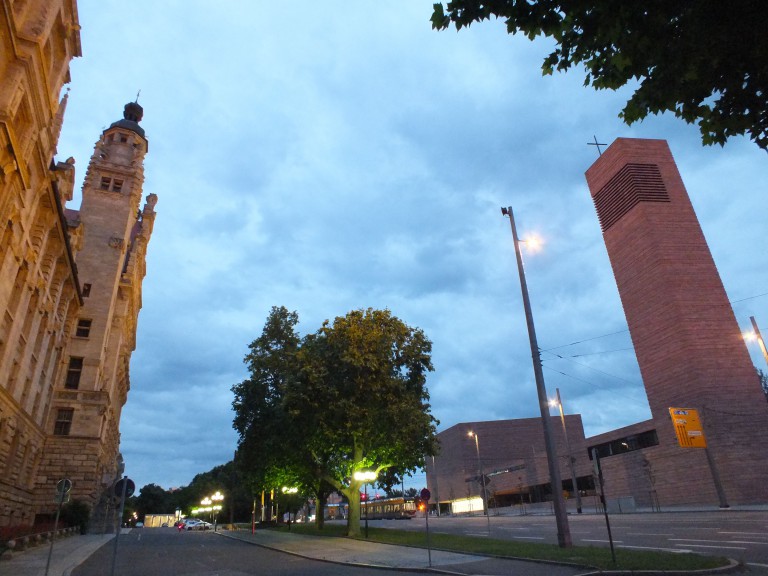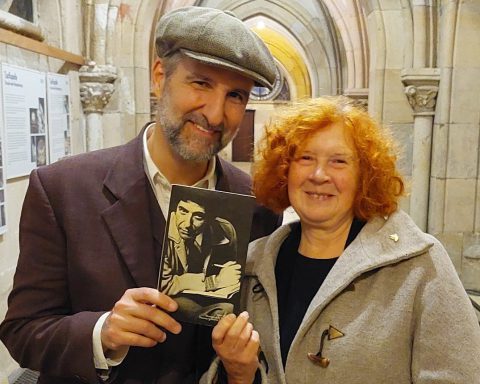Lindenau’s Kunstkraftwerk (“Power Plant of Art”) is energizing the Leipzig art scene with its new exhibition, the Illusion Art Gallery. This exhibit defies every stereotype of the hands-off, silent art gallery, inviting viewers to interact with the artworks and learn about science and art simultaneously.
The Illusion Art Gallery began at Trinity College in Dublin, Ireland, whose flagship Science Gallery has been combining art with scientific exploration since it began in 2008.
The idea behind the Science Gallery caught on quickly, and led to the opening of new branches all over the world. Illusion has been seen in many of these, but has just made its debut in continental Europe – that’s right, here in Leipzig, at the groundbreaking Kunstkraftwerk (18 June).

Andrea Bandelli, CEO of Science Gallery International, is very enthusiastic about the newest incarnation of the exhibition.
“Illusion has never looked better,” he says, thanks in part to the addition of two new works exclusive to the Kunstkraftwerk.
An open call for new works to add to the show led to over 30 applications from international artists in the space of two weeks. Eventually, the Kunstkraftwerk directors and the curator of Illusion selected two young artists from Germany and Poland to be featured in the show.
Curator Lavinia D. Freitas says that Illusion uses science, technology, and art to “drag you to a whole new world.” Visitors to the gallery will be immersed in these installations, which “challenge how we feel, see, and perceive the world.”
The three-story exhibit begins with simple visual tricks on the first floor, but the artworks become increasingly mysterious as visitors ascend through the galleries. It’s designed to be immersive; rather than the usual long-winded texts describing each piece, the gallery employs “mediators who establish a conversation with the visitors,” says Freitas. These mediators are students from the Leipzig area trained in the science and significance behind each art piece.
Text descriptions and instructions for each illusion are available as well, written in invisible print and readable only with the handheld blacklights scattered throughout the gallery. Descriptions and tours are available in both German and English, so international visitors should have no problems immersing themselves in the installations.
On the ground floor, visitors can step into “Alter Ego,” a piece by a German artist and a Kunstkraftwerk exclusive. Designed to be experienced in pairs, visitors can watch their faces morph into one another in the artwork’s tiny mirrored booth. “It’s designed to create a sense of empathy and interaction,” according to Freitas.
Upstairs, another piece from the open call is on display. RGB 01, by Polish artist Marcelina Wellmer, is an oil painting combined with a continually randomized computer projection that changes too slowly for viewers to notice, but which is constantly in transition. The result of this computer randomization is that no two viewers will ever see the same painting.
Visitors will be astounded by water falling upwards, “impossible bottles” containing objects too large to fit through the openings of the bottles themselves, and glass spheres that are larger on the inside than on the outside. The interactive works constantly ask viewers to question how a work is possible; but beyond explaining the psychology of the piece, don’t expect the mediators to reveal the secrets. The entire exhibit is designed to make you wonder, and to suspend your disbelief.
My personal favorite work is “Significant Birds”, a series of birdcages suspended in the center of a long gallery. When a visitor walks through these hanging cages, tiny speakers play little tweets and chirps sounding like birdsong, but the source of the recordings is far more surreal. Each tweeting cage is playing a single frequency found in a human voice, and when visitors move around through the work, their brains slowly reconstruct the original voice recording from the individual frequencies. The result is an unearthly sound that visitors will have to hear to believe.
This exciting, immersive, interactive exhibit will appeal to traditional art lovers and skeptics alike. It’s perfect for visitors of all ages – even adults will experience a sense of childlike wonder through the magic of Illusion.

Illusion – Nothing Is As It Seems will be on display at the Kunstkraftwerk until November 27. For opening hours and further information about the exhibition, visit the venue’s website.
By Kate Tyndall






![Wine & Paint event on 9 Nov. 2024 at Felix Restaurant, Leipzig. Photo: Florian Reime (@reime.visuals] / Wine & Paint Leipzig](https://leipglo.com/wp-content/uploads/2024/12/pixelcut-export-e1733056018933-480x384.jpeg)

